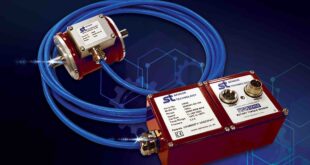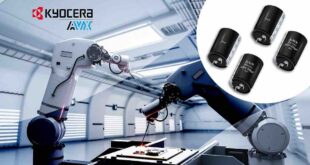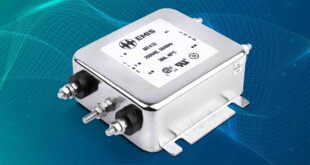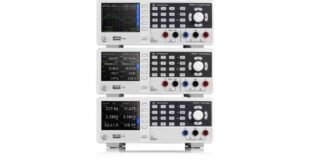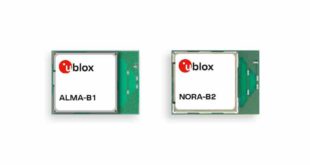Precision sensor manufacturer Micro-Epsilon continues the development of its optoNCDT 1900 series of laser triangulation sensors with the addition of the optoNCDT 1900-EtherCAT. This compact sensor has an integrated EtherCAT interface for direct connection to industrial controllers, eliminating the need for an external interface module, while reducing installation effort and wiring.
With the optoNCDT 1900-EtherCAT, signal conversion takes place directly in the sensor, without loss of speed and with full performance. After rebooting in EtherCAT mode, all the sensor settings are automatically applied to the TwinCAT software, which means time-consuming settings made directly in TwinCAT are no longer necessary. Less experienced TwinCAT users are able therefore to quickly integrate the sensor into the EtherCAT control unit.
For very fast measurements, that would normally be limited by the PLC’s cycle time, an oversampling function can be activated in the sensor, allowing measurement data to be transferred four times faster than the cycle time of the PLC (up to a maximum of 10kHz). For a PLC with a 1ms cycle time, this means a possible sensor measuring rate of 4kHz. For this purpose, the data is temporarily stored by the sensor and only transmitted with the next query cycle.
Glenn Wedgbrow, Business Development Manager at Micro-Epsilon UK comments: “The optoNCDT 1900-EtherCAT is the only laser triangulation sensor worldwide that combines high precision and such a compact design with an integrated Industrial Ethernet interface. This results in a sensor that sets new benchmarks for advanced automation tasks. Due to its flexible mounting options and advanced surface compensation features, the optoNCDT 1900-EtherCAT is also extremely versatile and will help solve a wide variety of industrial challenges, particularly in high-speed applications such as packaging machines, robots, high-speed presses, hydraulic systems, injection moulding machines and CNC machine tools, as well in highly networked systems or plants, for example, in transport technology, logistics and automation.”
The optoNCDT 1900-EtherCAT is available in seven measuring ranges from 2mm up to 500mm. Linearity is from ±1.0µm. Depending on the application, power can be supplied externally or via PoE (Power-over-Ethernet).
Laser line version for metals and structured surfaces
A laser line version of the optoNCDT 1900-EtherCAT is also available. The optoNCDT 1900LL-EtherCAT projects a small laser line onto the measuring object. The sensor performs particularly well in distance measurements where the sensor or measuring object is moved in the Z-axis direction, such as robot positioning. The sensor is designed for shiny metallic and structured surfaces, as well as for measurements of materials where the laser beam penetrates. For these surfaces, the small laser line offers significant advantages, as it optically averages and compensates for irregularities such as structure and roughness. In addition to optical averaging, special software algorithms filter out interferences caused by surface roughness, defects, depressions or the smallest of holes. Especially on metals, they achieve more stable and reliable measurement results than point sensors.
The optoNCDT 1900LL-EtherCAT is available in four measuring ranges from 2mm up to 50mm. Linearity is from ± 1.0 µm.
Fast, precise and stable
The optoNCDT 1900 series of laser triangulation sensors is perfect for high-speed distance, displacement and position measurements in a wide range of automation tasks, including machine building, robotics, automotive production, 3D printing and coordinate measuring machines. The high-performance controller integrated in all optoNCDT 1900 sensors enables fast and highly precise processing of measurement values. The intelligent exposure control and powerful signal processing ensure a stable measurement signal and maximum process reliability. In addition, the sensor has the highest resistance to ambient light in its class and can be used in strongly illuminated environments up to 50,000 lux.
The sensor itself has dimensions of 70 x 31 x 45mm and weighs just 185g.
High-performance optics create a small spot size onto the target, which enables tiny objects and surface details to be measured. A large aperture for the receiver ensures greater accuracy and repeatability when compared toother sensors of similar measurement range. The sensor itself is also extremely robust with the ability to withstand high shock and vibrations (up to 30g).
 Engineer News Network The ultimate online news and information resource for today’s engineer
Engineer News Network The ultimate online news and information resource for today’s engineer
